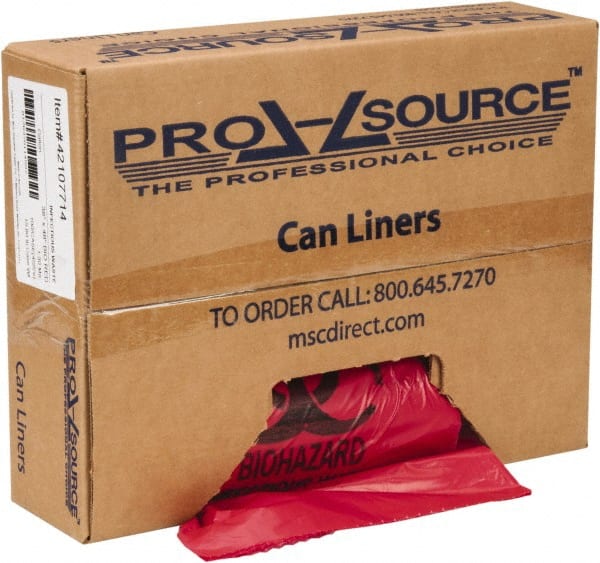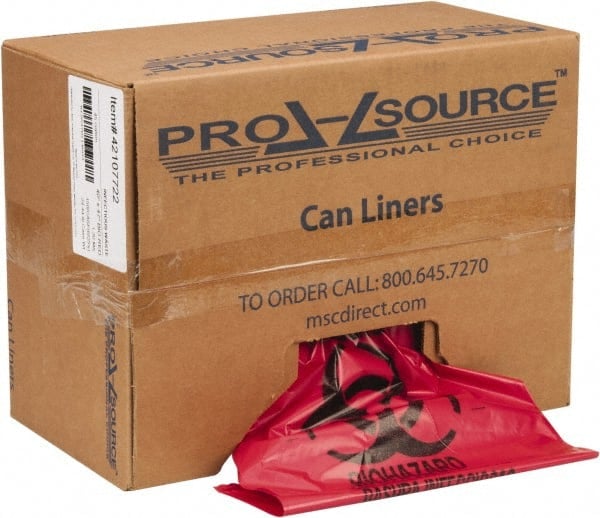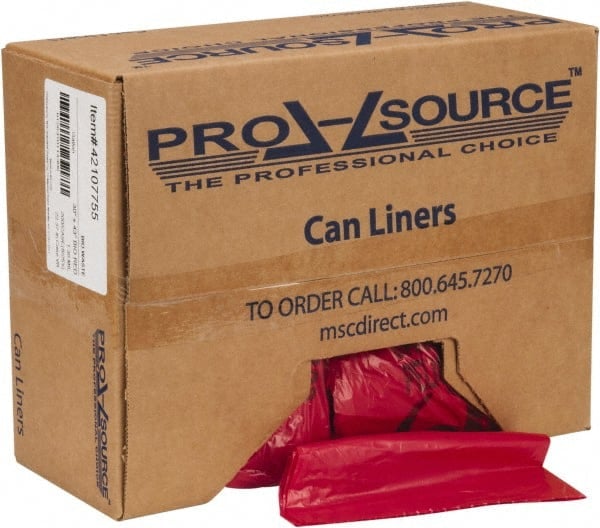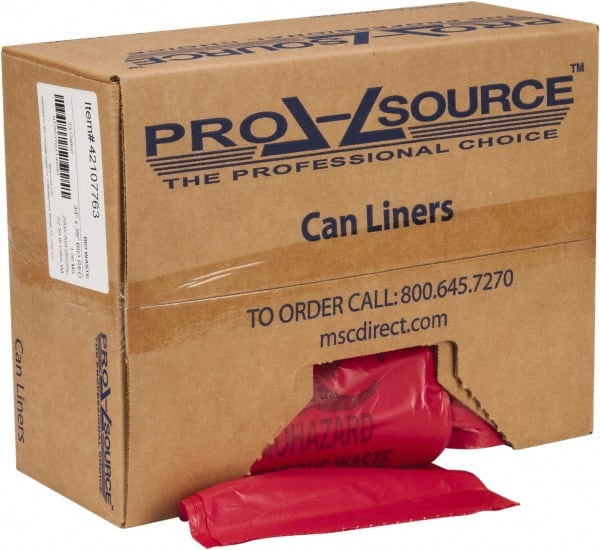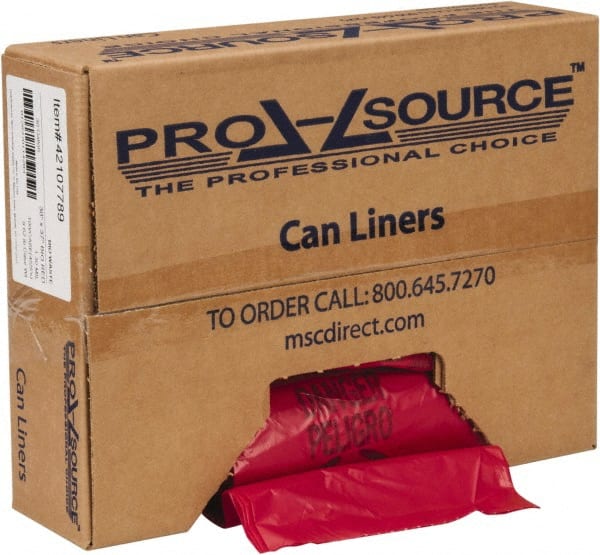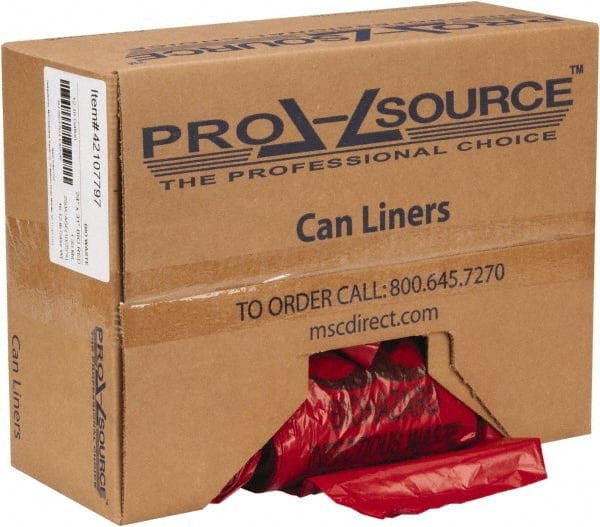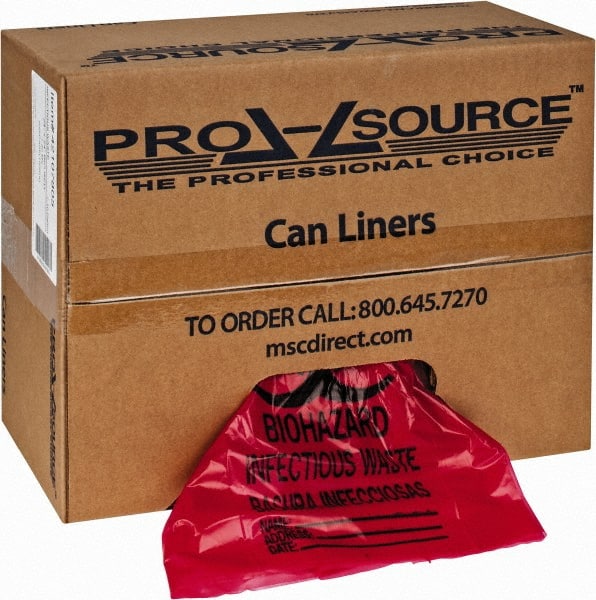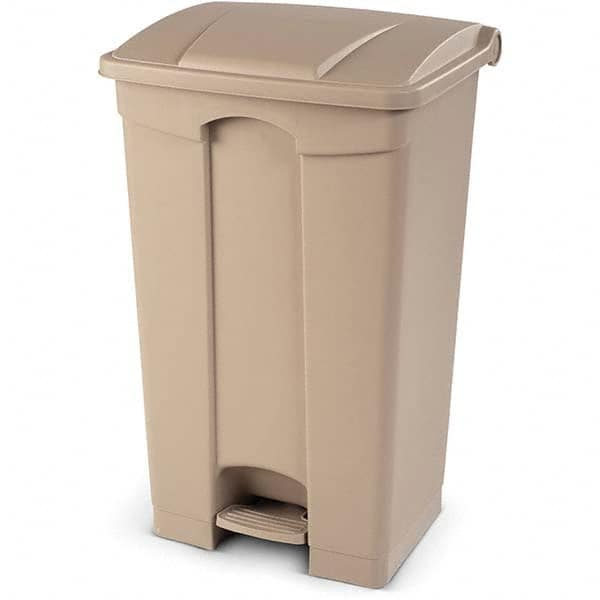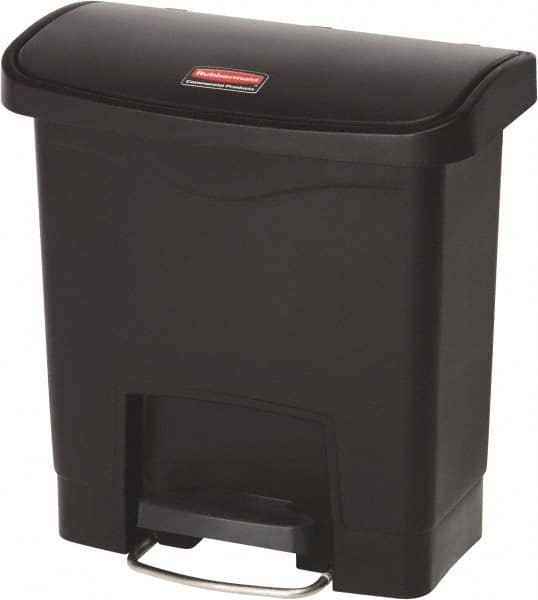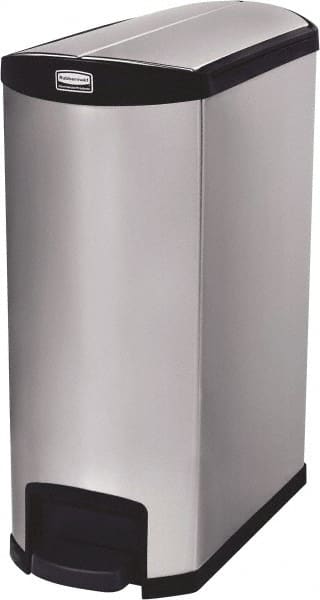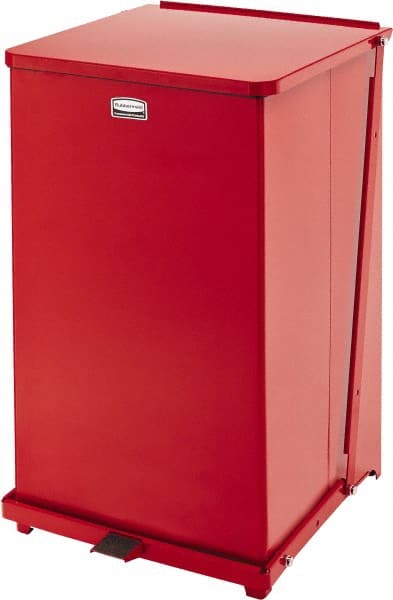Hazardous Waste Management: Ensuring Workplace Safety

Overview
In today's increasingly aware society, the management of hazardous waste has become paramount. From industrial facilities to healthcare settings, proper handling and disposal of hazardous materials are critical for maintaining safety and protecting the environment. With heightened awareness around environmental sustainability and workplace safety, businesses and organizations are seeking comprehensive solutions to address these challenges.
Table of Contents
Part I - Background on Hazardous Material Storage Solutions
Part II - Hazardous Materials Storage Tips, FAQs and Products
- Overview of Hazardous Waste Bags
- Overview of Hazardous Material Shipping Kits
- Overview of Hazardous Material Storage Buildings and Lockers
- Overview of Hazardous Material Storage Cabinet Locker and Buildings
- Overview of Biohazardous & Step-Open Trash Cans
Part I - Background on Hazardous Material Storage Solutions:
Hazardous material storage solutions are integral components utilized in environments where the storage and handling of hazardous substances pose significant safety and regulatory compliance challenges. These solutions are crucial across various industries, including manufacturing, chemical processing, healthcare, research laboratories, and waste management facilities.
The primary objective of hazardous material storage solutions is to ensure the safe containment, segregation, and management of hazardous materials to prevent spills, leaks, and exposure to personnel and the environment. These solutions encompass a wide range of products, including storage cabinets, lockers, buildings, and specialized containers, designed to meet stringent regulatory requirements and industry standards.
1. Stakeholders:
Those served by hazardous material storage solutions include:
a. Workers:
Hazardous material storage solutions protect workers who handle, store, and manage hazardous substances in their daily operations. By providing secure storage enclosures and containment systems, these solutions minimize the risk of accidents, spills, and exposure to hazardous materials, enhancing workplace safety.
b. Facility Owners and Managers:
Facility owners and managers are responsible for ensuring compliance with regulatory requirements and maintaining a safe working environment for their personnel. They rely on hazardous material storage solutions to store and manage hazardous materials safely, mitigate risks, and prevent regulatory violations and liabilities.c.
c. Safety Professionals:
Safety professionals collaborate with facility management and personnel to assess hazards, develop safety protocols, and implement appropriate storage solutions for hazardous materials. They ensure that storage solutions meet regulatory standards and provide training and guidance to personnel on proper handling and storage practices.
Typically, installations of hazardous material storage solutions are carried out by certified professionals with expertise in hazardous material management and storage requirements. These professionals assess the specific hazards present in each environment and recommend products that comply with safety regulations and enhance workplace safety.
2. Industries
Industries that frequently utilize hazardous material storage solutions include:
a. Chemical Processing:
Critical in chemical manufacturing facilities and processing plants to store and manage hazardous chemicals safely and prevent spills or leaks that could lead to environmental contamination or worker exposure.
b. Healthcare:
Used in healthcare facilities, including hospitals, laboratories, and research centers, to store and manage pharmaceuticals, biohazardous materials, and other hazardous substances in compliance with regulatory requirements and infection control protocols.
c. Waste Management:
Employed in waste management facilities, such as hazardous waste storage and treatment facilities, to store and manage hazardous waste streams safely and prevent environmental pollution or health hazards.
d. Industrial Manufacturing:
Utilized in industrial manufacturing facilities to store and manage hazardous materials used in production processes, such as solvents, paints, and adhesives, ensuring worker safety and regulatory compliance.
Overall, hazardous material storage solutions play a critical role in protecting personnel, facilities, and the environment from the risks associated with hazardous materials by providing safe and compliant storage options. By implementing appropriate storage solutions and best practices, industries can mitigate risks, ensure regulatory compliance, and promote a safe working environment.
Part II - Hazardous Materials Storage Tips, FAQs and Products:
1. Overview of Hazardous Waste Bags:
Hazardous waste bags are specially designed containers used for the safe collection, storage, and disposal of hazardous materials. These bags are constructed from durable materials that can withstand the rigors of handling and transport while containing potentially harmful substances.
a. Top 5 Safety Risks:
- Exposure to harmful chemicals or pathogens: Improper handling of hazardous waste can result in exposure to toxic chemicals or infectious agents, posing serious health risks to individuals.
- Contamination of the environment: Spills or leaks from improperly sealed bags can lead to contamination of soil, water sources, and air, endangering ecosystems and human health.
- Physical hazards: Sharp objects or broken glass within the waste can cause injuries if not properly contained and handled.
- Fire hazards: Certain hazardous materials are flammable or reactive, increasing the risk of fires or explosions if not managed correctly.
- Regulatory non-compliance: Failure to adhere to safety regulations governing hazardous waste disposal can result in fines, legal liabilities, and damage to reputation.
b. Top 5 Safety Considerations:
- Proper labeling: Ensure all hazardous waste bags are clearly labeled with the type of waste contained, date of collection, and any relevant hazard warnings to facilitate safe handling and disposal.
- Segregation of waste: Separate incompatible materials to prevent chemical reactions and minimize the risk of accidents during storage and transportation.
- Secure closure: Use closure mechanisms such as twist ties or zip ties to securely seal hazardous waste bags and prevent leaks or spills.
- Personal protective equipment (PPE): Provide appropriate PPE such as gloves, goggles, and respirators to personnel handling hazardous waste to protect against exposure to harmful substances.
- Training and education: Conduct regular training sessions to educate employees on proper procedures for handling, storing, and disposing of hazardous waste, emphasizing the importance of safety protocols and regulatory compliance.
c. Top 10 FAQs:
- What types of waste can be disposed of in hazardous waste bags?
- Hazardous waste bags are suitable for a wide range of materials, including chemicals, biohazardous waste, sharps, and contaminated items.
- How should hazardous waste bags be stored?
- Store hazardous waste bags in a designated area away from heat sources, direct sunlight, and incompatible materials. Ensure proper ventilation and access control to prevent unauthorized access.
- Are there specific regulations governing the disposal of hazardous waste?
- Yes, hazardous waste disposal is regulated by federal, state, and local authorities, with specific requirements for labeling, packaging, transportation, and disposal methods.
- Can hazardous waste bags be reused?
- It is generally not recommended to reuse hazardous waste bags due to the risk of contamination and compromised integrity. Dispose of used bags according to regulatory guidelines.
- How should spills or leaks from hazardous waste bags be handled?
- Immediately contain the spill using absorbent materials and PPE, then clean up the area following established spill response procedures to minimize environmental impact and health risks.
- What are the consequences of improper hazardous waste disposal?
- Improper disposal can result in environmental pollution, harm to wildlife, soil and water contamination, and adverse health effects on humans.
- Are there alternatives to traditional hazardous waste bags?
- Yes, some facilities utilize reusable containers or specialized containment systems for certain types of hazardous waste to reduce waste generation and environmental impact.
- How should hazardous waste bags be transported?
- Follow DOT regulations for the safe transport of hazardous materials, including proper labeling, packaging, placarding, and compliance with shipping requirements.
- What training is required for personnel handling hazardous waste?
- Employees must receive training on hazardous waste management practices, safety protocols, emergency procedures, and regulatory requirements relevant to their job responsibilities.
- How can I ensure compliance with hazardous waste regulations?
- Stay informed about current regulations, conduct regular audits of waste management practices, and consult with regulatory agencies or environmental health experts for guidance and assistance.
d. Product Recommendations:
2. Overview of Hazardous Material Shipping Kits:
Hazardous material shipping kits are comprehensive packages designed to facilitate the safe and compliant transport of hazardous materials by land, air, or sea. These kits typically include containers, labels, documentation, and packaging materials required for regulatory compliance.
a. Top 5 Safety Risks:
- Improper packaging: Inadequate packaging or labeling of hazardous materials can result in leaks, spills, or damage during transit, posing safety hazards to transportation workers and the public.
- Non-compliance with shipping regulations: Failure to comply with DOT, IATA, or IMO regulations governing the transport of hazardous materials can lead to fines, penalties, and legal liabilities.
- Exposure to hazardous substances: Personnel involved in handling, loading, or unloading hazardous materials may be at risk of exposure to toxic chemicals, fumes, or vapors if proper precautions are not taken.
- Incompatibility issues: Mixing incompatible materials in the same shipment can lead to chemical reactions, fires, or explosions, endangering the safety of transport personnel and the public.
- Emergency response preparedness: Lack of adequate training, equipment, or emergency response plans can exacerbate the consequences of accidents or incidents involving hazardous materials during transport.
b. Top 5 Safety Considerations:
- Proper classification and documentation: Accurately classify hazardous materials according to DOT, IATA, or IMO regulations and ensure all required shipping documents, including manifests, labels, and placards, are completed correctly.
- Packaging integrity: Use certified packaging materials and containers suitable for the specific hazards and modes of transport involved, ensuring proper sealing and containment of hazardous materials.
- Emergency response training: Provide training to personnel on proper emergency response procedures, including spill containment, evacuation, and notification protocols, to mitigate risks and minimize harm in the event of accidents.
- Handling precautions: Implement handling procedures such as double containment, segregation, and securing of packages to prevent damage, leaks, or spills during loading, unloading, and transit.
- Regulatory compliance audits: Conduct regular audits of shipping practices, documentation, and training programs to ensure compliance with applicable regulations and industry standards for hazardous material transport.
c. Top 10 FAQs:
- What types of hazardous material shipping kits are available?
- Hazardous material shipping kits vary depending on the type of materials being transported, the mode of transport, and regulatory requirements. Common components may include containers, absorbents, labels, and documentation.
- Do hazardous material shipping kits include everything needed for compliance?
- While shipping kits provide essential components for compliance, additional considerations such as proper training, packaging selection, and regulatory updates are necessary to ensure full compliance with shipping regulations.
- Are there specific requirements for labeling hazardous material shipments?
- Yes, hazardous material shipments must be labeled according to DOT, IATA, or IMO regulations, with labels indicating the hazard class, identification number, proper shipping name, and other required information.
- How should hazardous material shipping kits be stored?
- Store shipping kits in a designated area away from heat sources, direct sunlight, and incompatible materials. Ensure accessibility and visibility of kits for quick retrieval and use.
- Can hazardous material shipping kits be customized?
- Yes, some suppliers offer customizable shipping kits tailored to specific requirements, including container sizes, labeling options, and documentation formats.
- What training is required for personnel involved in shipping hazardous materials?
- Employees must receive training on hazardous material shipping regulations, packaging requirements, emergency response procedures, and documentation protocols relevant to their role in the shipping process.
- How should damaged or compromised shipping containers be handled?
- Remove damaged containers from circulation, transfer contents to replacement containers if necessary, and properly dispose of damaged packaging following applicable waste disposal regulations.
- Are there special considerations for international shipments of hazardous materials?
- Yes, international shipments of hazardous materials must comply with additional regulations and documentation requirements specified by IATA or IMO for air and sea transport, respectively.
- What steps should be taken in the event of a hazardous material spill during transport?
- Follow established spill response procedures, including containment, cleanup, and notification protocols, to mitigate environmental impact and protect the safety of personnel and the public.
- How can I stay informed about changes to hazardous material shipping regulations?
- Monitor regulatory updates from DOT, IATA, IMO, and other relevant authorities, subscribe to industry newsletters or publications, and participate in training programs or seminars to stay current on regulatory changes and best practices.
d. Product Recommendations:
3. Overview of Hazardous Material Storage Buildings and Lockers:
Hazardous material storage buildings and lockers are specialized structures designed to safely store hazardous materials and protect them from environmental contamination, theft, or unauthorized access. These buildings and lockers are constructed to meet stringent regulatory requirements and provide secure storage solutions for various industries.
a. Top 5 Safety Risks:
- Unauthorized access: Lack of adequate security measures can result in unauthorized individuals gaining access to hazardous materials, increasing the risk of theft, sabotage, or misuse.
- Inadequate ventilation: Poor ventilation within storage buildings or lockers can lead to the accumulation of toxic fumes or vapors, posing respiratory hazards to personnel and potentially causing asphyxiation or health problems.
- Chemical spills or leaks: Improper containment or handling of hazardous materials can result in spills or leaks within storage facilities, leading to environmental contamination, property damage, and health risks.
- Structural integrity: Structural deficiencies or damage to storage buildings or lockers can compromise their ability to contain hazardous materials safely, increasing the risk of accidents, collapses, or releases.
- Fire and explosion hazards: Certain hazardous materials are flammable, reactive, or combustible, posing fire and explosion hazards if not stored properly or segregated from incompatible substances.
b. Top 5 Safety Considerations:
- Security measures: Implement access controls, surveillance systems, and perimeter fencing to prevent unauthorized access to hazardous material storage facilities and deter theft or tampering.
- Ventilation systems: Install adequate ventilation systems, including exhaust fans, air filtration units, and gas detection devices, to maintain air quality and remove hazardous fumes or vapors from storage areas.
- Spill containment measures: Use spill containment pallets, berms, or secondary containment systems to contain spills or leaks and prevent them from spreading or reaching the environment.
- Structural integrity assessments: Conduct regular inspections and maintenance checks of storage buildings and lockers to identify and address any structural defects, corrosion, or damage that could compromise their integrity.
- Fire protection systems: Install fire suppression systems, such as sprinklers, fire extinguishers, and fire-resistant construction materials, to mitigate the risk of fires or explosions and protect personnel and property.
c. Top 10 FAQs:
- What types of hazardous materials can be stored in hazardous material storage buildings and lockers?
- Hazardous material storage buildings and lockers are suitable for storing a wide range of materials, including chemicals, flammable liquids, pesticides, and hazardous waste.
- Are there specific regulations governing the design and construction of hazardous material storage facilities?
- Yes, hazardous material storage facilities must comply with regulatory requirements set forth by agencies such as OSHA, EPA, and NFPA, covering aspects such as structural integrity, ventilation, fire protection, and security.
- Can hazardous material storage buildings be customized to fit specific requirements?
- Yes, many suppliers offer customizable storage solutions tailored to meet the unique needs and specifications of individual facilities, including size, layout, features, and accessories.
- How should hazardous material storage buildings be located within a facility?
- Locate storage buildings in areas with sufficient space, access, and ventilation, away from sources of ignition, heat, or incompatible materials. Follow zoning regulations and environmental guidelines when siting storage facilities.
- What training is required for personnel responsible for managing hazardous material storage facilities?
- Personnel must receive training on proper storage practices, safety protocols, emergency response procedures, and regulatory compliance relevant to their roles in managing hazardous materials.
- Are there requirements for labeling hazardous material storage buildings and lockers?
- Yes, storage facilities must be clearly labeled with signage indicating the types of hazardous materials stored, hazard warnings, emergency contact information, and access restrictions.
- How often should hazardous material storage facilities be inspected?
- Conduct regular inspections of storage facilities, including structural integrity checks, leak detection tests, ventilation assessments, and inventory audits, to ensure compliance and identify potential hazards.
- What should be done in the event of a chemical spill or leak within a storage facility?
- Follow established spill response procedures, including containment, cleanup, and notification protocols, to minimize environmental impact and protect personnel and property from harm.
- Can hazardous material storage buildings be relocated or expanded?
- Some modular storage solutions offer flexibility for relocation or expansion as needed, allowing facilities to adapt to changing requirements and accommodate growth or reconfiguration.
- How can I ensure compliance with hazardous material storage regulations?
- Stay informed about current regulations, conduct regular audits of storage practices and facilities, train personnel on safety procedures, and seek guidance from regulatory agencies or industry experts as needed.
d. Product Recommendations:
4. Overview of Hazardous Material Storage Cabinet Locker and Buildings:
Hazardous material storage cabinet lockers and buildings are specialized enclosures designed to safely store hazardous materials and protect them from environmental contamination, theft, or unauthorized access. These cabinets and buildings are constructed to meet stringent regulatory requirements and provide secure storage solutions for various industries.
a. Top 5 Safety Risks:
- Unauthorized access: Lack of adequate security measures can result in unauthorized individuals gaining access to hazardous materials, increasing the risk of theft, sabotage, or misuse.
- Inadequate ventilation: Poor ventilation within storage cabinets or buildings can lead to the accumulation of toxic fumes or vapors, posing respiratory hazards to personnel and potentially causing asphyxiation or health problems.
- Chemical spills or leaks: Improper containment or handling of hazardous materials can result in spills or leaks within storage enclosures, leading to environmental contamination, property damage, and health risks.
- Structural integrity: Structural deficiencies or damage to storage cabinets or buildings can compromise their ability to contain hazardous materials safely, increasing the risk of accidents, collapses, or releases.
- Fire and explosion hazards: Certain hazardous materials are flammable, reactive, or combustible, posing fire and explosion hazards if not stored properly or segregated from incompatible substances.
b. Top 5 Safety Considerations:
- Security measures: Implement access controls, surveillance systems, and perimeter fencing to prevent unauthorized access to hazardous material storage enclosures and deter theft or tampering.
- Ventilation systems: Install adequate ventilation systems, including exhaust fans, air filtration units, and gas detection devices, to maintain air quality and remove hazardous fumes or vapors from storage areas.
- Spill containment measures: Use spill containment pallets, berms, or secondary containment systems to contain spills or leaks and prevent them from spreading or reaching the environment.
- Structural integrity assessments: Conduct regular inspections and maintenance checks of storage cabinets and buildings to identify and address any structural defects, corrosion, or damage that could compromise their integrity.
- Fire protection systems: Install fire suppression systems, such as sprinklers, fire extinguishers, and fire-resistant construction materials, to mitigate the risk of fires or explosions and protect personnel and property.
c. Top 10 FAQs:
- What types of hazardous materials can be stored in hazardous material storage cabinets and buildings?
- Hazardous material storage enclosures are suitable for storing a wide range of materials, including chemicals, flammable liquids, pesticides, and hazardous waste.
- Are there specific regulations governing the design and construction of hazardous material storage enclosures?
- Yes, hazardous material storage enclosures must comply with regulatory requirements set forth by agencies such as OSHA, EPA, and NFPA, covering aspects such as structural integrity, ventilation, fire protection, and security.
- Can hazardous material storage cabinets and buildings be customized to fit specific requirements?
- Yes, many suppliers offer customizable storage solutions tailored to meet the unique needs and specifications of individual facilities, including size, layout, features, and accessories.
- How should hazardous material storage cabinets and buildings be located within a facility?
- Locate storage enclosures in areas with sufficient space, access, and ventilation, away from sources of ignition, heat, or incompatible materials. Follow zoning regulations and environmental guidelines when siting storage facilities.
- What training is required for personnel responsible for managing hazardous material storage enclosures?
- Personnel must receive training on proper storage practices, safety protocols, emergency response procedures, and regulatory compliance relevant to their roles in managing hazardous materials.
- Are there requirements for labeling hazardous material storage cabinets and buildings?
- Yes, storage enclosures must be clearly labeled with signage indicating the types of hazardous materials stored, hazard warnings, emergency contact information, and access restrictions.
- How often should hazardous material storage enclosures be inspected?
- Conduct regular inspections of storage enclosures, including structural integrity checks, leak detection tests, ventilation assessments, and inventory audits, to ensure compliance and identify potential hazards.
- What should be done in the event of a chemical spill or leak within a storage enclosure?
- Follow established spill response procedures, including containment, cleanup, and notification protocols, to minimize environmental impact and protect personnel and property from harm.
- Can hazardous material storage cabinets and buildings be relocated or expanded?
- Some modular storage solutions offer flexibility for relocation or expansion as needed, allowing facilities to adapt to changing requirements and accommodate growth or reconfiguration.
- How can I ensure compliance with hazardous material storage regulations?
- Stay informed about current regulations, conduct regular audits of storage practices and facilities, train personnel on safety procedures, and seek guidance from regulatory agencies or industry experts as needed.
d. Product Recommendations:
5. Overview of Biohazardous & Step-Open Trash Cans:
Biohazardous and step-open trash cans are specialized containers designed for the safe disposal of biohazardous waste and other potentially infectious materials. These trash cans feature secure closures, leak-resistant liners, and foot-operated pedals for hands-free operation, minimizing the risk of contamination and promoting hygiene in healthcare, laboratory, and industrial settings.
a. Top 5 Safety Risks:
- Exposure to infectious agents: Improper handling or disposal of biohazardous waste can result in exposure to infectious pathogens, increasing the risk of disease transmission and contamination.
- Cross-contamination: Mixing biohazardous waste with regular trash or recycling streams can lead to cross-contamination, spreading infectious agents and compromising hygiene standards.
- Needlestick injuries: Improper disposal of sharp objects such as needles or lancets increases the risk of needlestick injuries, potentially exposing individuals to bloodborne pathogens and other hazards.
- Inadequate containment: Leaks or spills from biohazardous waste containers can result in environmental contamination, posing health risks to personnel, wildlife, and ecosystems.
- Regulatory non-compliance: Failure to adhere to regulations governing the handling, storage, and disposal of biohazardous waste can lead to fines, legal liabilities, and reputational damage for organizations.
b. Top 5 Safety Considerations:
- Segregation of waste: Separate biohazardous waste from regular trash streams using dedicated containers labeled with biohazard symbols to prevent cross-contamination and ensure proper disposal.
- Hands-free operation: Choose trash cans with step-open pedals or touchless mechanisms to minimize direct contact with potentially contaminated surfaces and reduce the risk of cross-contamination.
- Leak-resistant liners: Use durable liners or bags designed to withstand punctures and leaks, ensuring containment of biohazardous waste and preventing spills or exposure during handling and transport.
- Needle disposal solutions: Implement safe needle disposal systems, such as puncture-resistant sharps containers or needle destruction devices, to minimize the risk of needlestick injuries and bloodborne pathogen exposure.
- Compliance with regulations: Familiarize personnel with regulations governing biohazardous waste disposal, including OSHA's Bloodborne Pathogens Standard and EPA's Medical Waste Tracking Act, to ensure compliance and promote safety in waste management practices.
c. Top 10 FAQs:
-
What types of materials are considered biohazardous waste?
-
- Biohazardous waste includes materials contaminated with potentially infectious agents, such as blood, bodily fluids, tissues, microbiological cultures, and sharps (e.g., needles, syringes, lancets).
-
Are there specific regulations governing the disposal of biohazardous waste?
- Yes, there are regulations set forth by agencies such as OSHA (Occupational Safety and Health Administration) and EPA (Environmental Protection Agency) that govern the handling, storage, transportation, and disposal of biohazardous waste. Compliance with these regulations ensures the safe management of biohazardous materials and minimizes the risk of exposure to pathogens.
-
How should biohazardous waste be segregated from regular trash?
- Biohazardous waste should be segregated from regular trash using dedicated containers labeled with biohazard symbols. These containers should be leak-proof, puncture-resistant, and securely closed to prevent the release of infectious agents. It's essential to establish clear procedures for the segregation, collection, and disposal of biohazardous waste to minimize the risk of cross-contamination.
-
What precautions should be taken when handling biohazardous waste?
- When handling biohazardous waste, personnel should wear appropriate personal protective equipment (PPE), such as gloves, gowns, masks, and eye protection, to prevent exposure to infectious agents. Additionally, staff should follow established protocols for safe handling, transportation, and disposal of biohazardous materials, including proper hand hygiene and waste segregation practices.
-
Are there special disposal requirements for sharps waste?
- Yes, sharps waste, such as needles, syringes, and lancets, must be disposed of in puncture-resistant containers specifically designed for sharps disposal. These containers should be labeled with the biohazard symbol and handled with caution to prevent needlestick injuries and minimize the risk of bloodborne pathogen transmission.
-
How should biohazardous waste containers be labeled?
- Biohazardous waste containers should be clearly labeled with the biohazard symbol and the word "Biohazard" to indicate the presence of infectious materials. Additional information, such as the type of waste, date of collection, and generator information, may also be included on the label to facilitate proper handling and tracking.
-
Can biohazardous waste containers be reused?
- In general, biohazardous waste containers should not be reused to prevent the risk of contamination and cross-contamination. Single-use containers are typically recommended for the safe disposal of biohazardous waste. However, some reusable containers may be suitable for sterilization or decontamination under specific guidelines and protocols.
-
What should be done in the event of a spill or leak from a biohazardous waste container?
- In the event of a spill or leak from a biohazardous waste container, immediate action should be taken to contain the spill and prevent further exposure. Personnel should don appropriate PPE, contain the spill using absorbent materials, and follow established spill response procedures. Contaminated surfaces should be cleaned and disinfected, and any contaminated waste should be properly disposed of according to regulations.
-
Are there training requirements for personnel handling biohazardous waste?
- Yes, personnel responsible for handling biohazardous waste should receive appropriate training on safety protocols, waste management procedures, and regulatory compliance. Training should cover topics such as proper PPE use, waste segregation, spill response, and emergency procedures to ensure the safe handling and disposal of biohazardous materials.
-
How can I ensure compliance with biohazardous waste regulations?
- Compliance with biohazardous waste regulations can be ensured through ongoing training, regular audits, and adherence to established protocols. Facilities should maintain comprehensive documentation of waste management practices, conduct periodic reviews of regulatory requirements, and seek guidance from regulatory agencies or industry experts as needed to remain compliant with applicable regulations.
d. Product Recommendations:
Conclusion:
By adhering to safety guidelines and utilizing appropriate hazardous waste management products, businesses can mitigate risks, ensure regulatory compliance, and protect the health and well-being of workers and the environment. With comprehensive solutions for hazardous waste disposal, storage, and transportation, organizations can navigate the complexities of waste management while promoting sustainability and safety in their operations.


